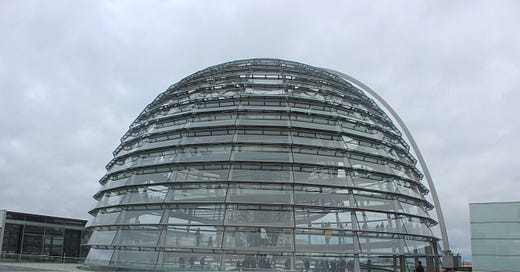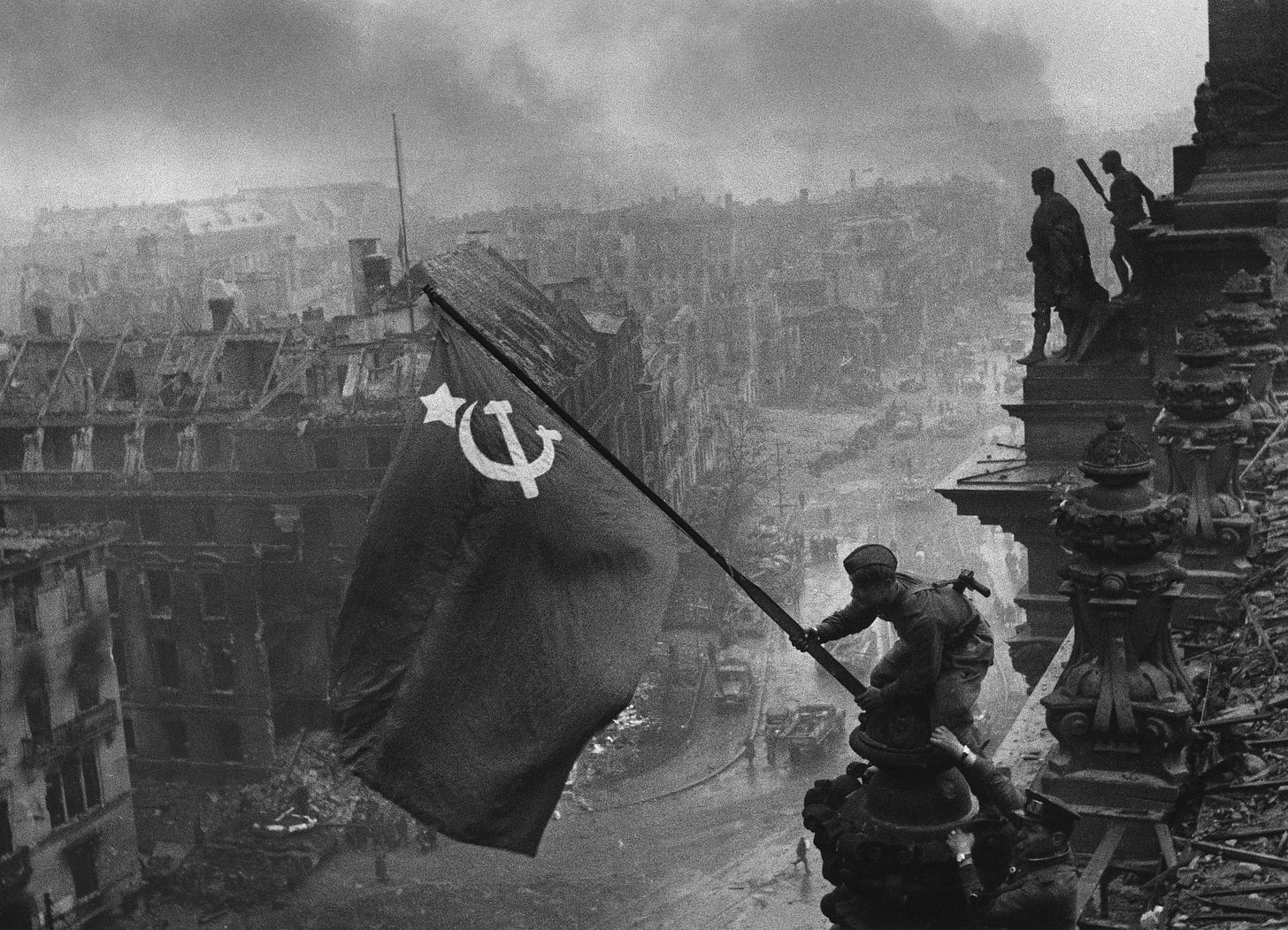The Reichstag, the U.S. Capitol and fealty to history
The Germans provide a model for how to be honest and truthful about an attack on the capitol of a democracy
Our family visited Berlin last week. A highlight of the trip was a tour of the Reichstag dome. I highly recommend it, especially as a way to start your visit and orient yourself.
The dome is an architecturally ambitious glass and steel structure. It includes moving mirrors and a rotating shade structure that allow natural light to productively illuminate the Bundestag’s plenary chamber, making a metaphor about sunlight, transparency and democracy.
As you ascend the 360° spiral ramp inside the dome, the audio tour (recommended) points out the city sights out the window and gives a history of the Reichstag, which is augmented by a static display at the base of the dome.
The information does not downplay the Reichstag’s role in the dark parts of Berlin’s 20th century history. The current dome replaced one damaged in the notorious 1933 fire that played a key role in the Nazi rise to power, and by Allied bombing during World War II. One of the most iconic photos of the war was of Soviet soldiers raising their flag atop the Reichstag as they took Berlin.
My wife observed that the language (the English translation) used in the displays was very straightforward and fact-based. It was clear about right and wrong. It used terms like “Nazi dictatorship” that “destroyed democracy” without resorting to adjectival flourishes that to convey a triumphal or propagandistic tone. It was showing, not telling. I found that effective.
My mind immediately turned to the Capitol Building of my own country, in my own city, Washington, DC. Like the Reichstag, the U.S. Capitol was the target of a violent event at a potential inflection point for the fate of the country’s democracy.
There are major differences of course. It remains unclear who started the Reichstag fire on February 27, 1933. It may have been Communist opponents of the new Nazi regime, a false-flag operation by the Nazis to blame on the Communists, or someone else. By contrast, we know very clearly who stormed the U.S. Capitol on January 6, 2021, and why. The fire provided the Nazis the opportunity to get what they wanted: removal of political opponents and suspension civil liberties and basic human rights. The mob in the U.S. Capitol did not get what they wanted.
The parallel I drew is in how the history is told. As far as I’m aware, today there are no plaques, memorials or displays in the U.S. Capitol complex about the January 6 attack, Capitol tours do not mention the attack unless asked, reportedly because the guides were told by superiors not to bring it up. On the Reichstag tour, my daughter remarked that, “you’re not going to see this kind of stuff in the Capitol as long as the people who supported the mob are in charge of the place.”
The most recent former Speaker of the House made good on a promise to terminate the committee investigating the attack. The current Speaker reportedly played a key role in trying to overturn the 2020 election decision, leading an appeal to the Supreme Court to invalidate the results. There are reportedly plans to retaliate against officials who have acted to hold accountable those who planned or participated in the attack, if Donald Trump retakes office.
What happened at the Capitol on January 6, 2021, is a historical fact. What the crowd was trying to do is indisputable. All the world can see the video and documentary evidence. But whether this history is told in the place where it happened is a choice. The way that the Germans have addressed the history of the Reichstag, inside the Reichstag, provides us a model for how we can be honest and truthful with the history of our own Capitol.






